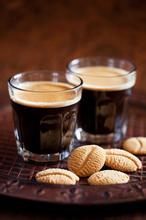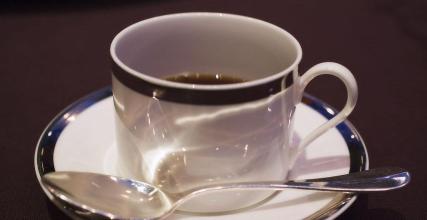Coffee tree culture, origin legends, main ingredients
Major component editor
Fibre
The fiber of raw beans will be carbonized after baking and combine with caramel to form the hue of coffee.
Protein
The main source of calories, the proportion is not high. Most of the protein in coffee powder will not dissolve out when brewing coffee, so the intake is limited.
Sugar
Raw coffee beans contain about 8% sugar. After roasting, most of the sugars are converted to caramel, which browns the coffee and combines with tannins to produce sweetness.
Mineral substance
Contains a small amount of lime, iron, phosphorus, sodium carbonate and so on.
Caffeine
It has a particularly strong bitter taste and stimulates the central nervous system, heart and respiratory system. Appropriate amount of caffeine can also reduce muscle fatigue and promote digestive juice secretion. Because it promotes kidney function, it is diuretic and helps the body to expel excess sodium ions from the body. But eating too much can lead to caffeine poisoning.
Tannic acid
Boiled tannic acid will decompose into pyrouric acid, so coffee that has been brewed for too long will taste worse.
Fat: the most important ones are acid fat and volatile fat.
Acid fat
That is, fat contains acid, its strength will vary according to the type of coffee.
Volatile fat
It is the main source of coffee aroma. It is a kind of aromatic substance that emits about 40 kinds of aroma.
Origin legend editor
The Story of the Shepherd
The Story of the Shepherd: according to Rothschild Neroy (1613-1707), a Roman linguist, about
Coffee beans
Coffee beans
In the sixth century, when Kardai, an Arab shepherd, was herding sheep to the Isobian prairie for grazing, he was surprised to see that each goat was extremely excited and excited. After careful observation, he found that these sheep were excited only after eating some kind of red fruit. Cardai tasted some of them curiously and found that these fruits were very sweet and delicious, and he felt very refreshed after eating them. From then on, he often drove the sheep to eat this delicious fruit. Later, a Muslim passed through here and took some of this incredible red fruit home and distributed it to other parishioners, so its magical effect spread.
The Story of Shack Omar
Other legends are Shack, the guardian saint of the Arabian Peninsula. Chuck Omar, a disciple of Caldi, was a highly respected and beloved chief in Mocha, but he was expelled by his people for committing a crime. Shack. Omar was exiled to Osama in the country, where he stumbled upon the fruit of coffee in 1258. One day, Omar was walking hungry in the mountains and saw the birds on the branches pecking at the fruit of the trees. He took the fruit back and boiled it with water, but it unexpectedly gave out a rich and attractive fragrance, and the original feeling of fatigue was eliminated after drinking it. Omar collected many of these magical fruits, and when they met someone who was sick, they made the fruit into soup for them to drink and refreshed. Because he did good everywhere and was loved by believers, his sins were soon forgiven, and when he returned to Mocha, he was praised for finding this fruit, and people did not worship him as a saint. At that time, the magic cure was said to be coffee.
The Story of Deckley
This is a romantic story. Gabriel, a French naval officer on the island of Matinique, circa 1720 or 1723. Mathieu. De. As he was about to leave Paris, Klee managed to get some coffee trees and decided to take them back to Martinique. He had been taking good care of the saplings and keeping them in a glass box on the deck to protect them from sea water and heat. De. Klee was threatened by pirates during the journey, experienced the storm, and the jealousy and destruction of his fellow ship, and even saved his own water to water the sapling when drinking water was scarce. His coffee tree finally took root in Martinique and got its first harvest in 1726. It is said that by 1777 Martinique had 18791680 coffee trees, Gabriel. Mathieu. De. Klee played an important role. Gabriel. Mathieu. De. Klee died in Paris on November 30, 1724, and in 1918 a monument was built for him at the Ford Botanical Garden in Martinique, France.

Important Notice :
前街咖啡 FrontStreet Coffee has moved to new addredd:
FrontStreet Coffee Address: 315,Donghua East Road,GuangZhou
Tel:020 38364473
- Prev

An introduction to the Origin and Cultural course of Coffee beans in Kenya
1) Common classification: hand-picked coffee fruit, picked by hand, picked out immature fruit (unripe), overripe fruit (overripe) and other defects, peeled, after about 36 hours of fermentation, placed on a metal grid for sun drying, in the processing plant to remove the seed shell (parchment), become a blue-green appearance of attractive Kenyan raw beans. These beautiful raw beans, roots
- Next

Introduction of coffee beans, producing areas, flavor, etc.
Cuba: Turquino (Hawaii): Kona (Jamaica): blue Mountains (Blue Mountain) East Timor: Maubbessee Cameroon: Bamirek (Bamileke) and Bamun (Bamoun) Burundi: Ngozi (Ngozi) Angola: Ambriz, Amborm, Novo Redondo Zimbabwe: Chipinga (C)
Related
- Does Rose Summer choose Blue, Green or Red? Detailed explanation of Rose Summer Coffee plots and Classification in Panamanian Jade Manor
- What is the difference between the origin, producing area, processing plant, cooperative and manor of coffee beans?
- How fine does the espresso powder fit? how to grind the espresso?
- Sca coffee roasting degree color card coffee roasting degree 8 roasting color values what do you mean?
- The practice of lattes: how to make lattes at home
- Introduction to Indonesian Fine Coffee beans-- Java Coffee producing area of Indonesian Arabica Coffee
- How much will the flavor of light and medium roasted rose summer be expressed? What baking level is rose summer suitable for?
- Introduction to the characteristics of washing, sun-drying or wet-planing coffee commonly used in Mantenin, Indonesia
- Price characteristics of Arabica Coffee Bean Starbucks introduction to Manning Coffee Bean Taste producing area Variety Manor
- What is the authentic Yega flavor? What are the flavor characteristics of the really excellent Yejasuffi coffee beans?

